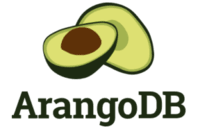Memcached is a general-purpose distributed memory-caching system. It is often used to speed up dynamic database-driven websites by caching data and objects in RAM to reduce the number of times an external data source must be read. Memcached is free and open-source software, licensed under the Revised BSD license. Memcached runs on Unix-like operating systems and on Microsoft Windows. It depends on the libevent library.

Amazon Web Services, Inc. (AWS) is a subsidiary of Amazon that provides on-demand cloud computing platforms and APIs to individuals, companies, and governments, on a metered, pay-as-you-go basis. Clients will often use this in combination with autoscaling. These cloud computing web services provide various services related to networking, compute, storage, middleware, IoT and other processing capacity, as well as software tools via AWS server farms. This frees clients from managing, scaling, and patching hardware and operating systems. One of the foundational services is Amazon Elastic Compute Cloud (EC2), which allows users to have at their disposal a virtual cluster of computers, with extremely high availability, which can be interacted with over the internet via REST APIs, a CLI or the AWS console. AWS's virtual computers emulate most of the attributes of a real computer, including hardware central processing units (CPUs) and graphics processing units (GPUs) for processing; local/RAM memory; Hard-disk(HDD)/SSD storage; a choice of operating systems; networking; and pre-loaded application software such as web servers, databases, and customer relationship management (CRM).
In computing, a solution stack or software stack is a set of software subsystems or components needed to create a complete platform such that no additional software is needed to support applications. Applications are said to "run on" or "run on top of" the resulting platform.

Amazon Elastic Compute Cloud (EC2) is a part of Amazon.com's cloud-computing platform, Amazon Web Services (AWS), that allows users to rent virtual computers on which to run their own computer applications. EC2 encourages scalable deployment of applications by providing a web service through which a user can boot an Amazon Machine Image (AMI) to configure a virtual machine, which Amazon calls an "instance", containing any software desired. A user can create, launch, and terminate server-instances as needed, paying by the second for active servers – hence the term "elastic". EC2 provides users with control over the geographical location of instances that allows for latency optimization and high levels of redundancy. In November 2010, Amazon switched its own retail website platform to EC2 and AWS.
A Contributor License Agreement (CLA) defines the terms under which intellectual property has been contributed to a company/project, typically software under an open source license.
A database shard, or simply a shard, is a horizontal partition of data in a database or search engine. Each shard is held on a separate database server instance, to spread load.
MongoDB is a source-available, cross-platform, document-oriented database program. Classified as a NoSQL database product, MongoDB utilizes JSON-like documents with optional schemas. MongoDB is developed by MongoDB Inc. and current versions are licensed under the Server Side Public License (SSPL). MongoDB is a member of the MACH Alliance.

Redis is a source available, in-memory storage, used as a distributed, in-memory key–value database, cache and message broker, with optional durability. Because it holds all data in memory and because of its design, Redis offers low-latency reads and writes, making it particularly suitable for use cases that require a cache. Redis is the most popular NoSQL database, and one of the most popular databases overall. Redis is used in companies like Twitter, Airbnb, Tinder, Yahoo, Adobe, Hulu, Amazon and OpenAI.

The open-core model is a business model for the monetization of commercially produced open-source software. The open-core model primarily involves offering a "core" or feature-limited version of a software product as free and open-source software, while offering "commercial" versions or add-ons as proprietary software. The term was coined by Andrew Lampitt in 2008.

Kibana is a source-available data visualization dashboard software for Elasticsearch.

ArangoDB is a graph database system developed by ArangoDB Inc. ArangoDB is a multi-model database system since it supports three data models with one database core and a unified query language AQL. AQL is mainly a declarative language and allows the combination of different data access patterns in a single query.
This is a timeline of Amazon Web Services, which offers a suite of cloud computing services that make up an on-demand computing platform.

Elastic NV is an American-Dutch company that was founded in 2012 in Amsterdam, the Netherlands, and was previously known as Elasticsearch. It is a search company that builds self-managed and software as a service (SaaS) offerings for search, logging, security, observability, and analytics use cases.
The Server Side Public License (SSPL) is a source-available copyleft software license introduced by MongoDB Inc. in 2018.
OpenSearch is a family of software consisting of a search engine, and OpenSearch Dashboards, a data visualization dashboard for that search engine. The software started in 2021 as a fork of Elasticsearch and Kibana, with development led by Amazon Web Services.
Teunis Steven Schuurman is a Dutch technology and media entrepreneur, best known for co-founding and being the first CEO of Elastic, a data search and analytics company listed at the NYSE (ESTC). After stepping down as CEO of Elastic in 2017, he started to work towards dedicating his time and resources exclusively to philanthropy. He is also the co-founder of Atlantis Entertainment, SpringSource and the founder of the non-profit organisations the Dreamery Foundation and FutureNL.

Trino is an open-source distributed SQL query engine designed to query large data sets distributed over one or more heterogeneous data sources. Trino can query data lakes that contain open column-oriented data file formats like ORC or Parquet residing on different storage systems like HDFS, AWS S3, Google Cloud Storage, or Azure Blob Storage using the Hive and Iceberg table formats. Trino also has the ability to run federated queries that query tables in different data sources such as MySQL, PostgreSQL, Cassandra, Kafka, MongoDB and Elasticsearch. Trino is released under the Apache License.
OpenSearch or Open Search may refer to:
Valkey is an open-source in-memory storage, used as a distributed, in-memory key–value database, cache and message broker, with optional durability. Because it holds all data in memory and because of its design, Valkey offers low-latency reads and writes, making it particularly suitable for use cases that require a cache. Valkey is the successor to Redis, the most popular NoSQL database, and one of the most popular databases overall. Valkey or its predecessor Redis are used in companies like Twitter, Airbnb, Tinder, Yahoo, Adobe, Hulu, Amazon and OpenAI.








